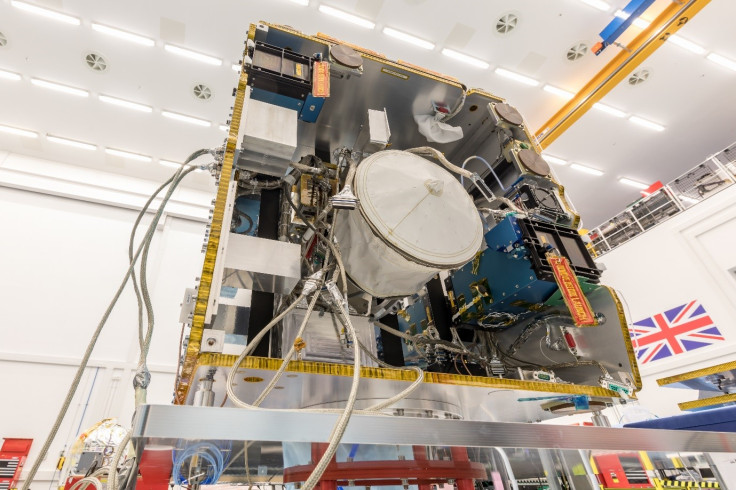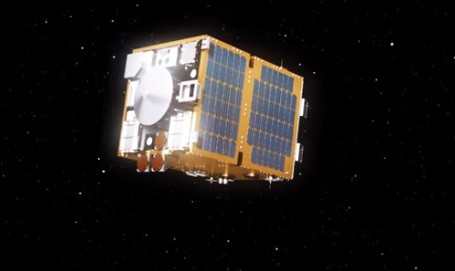Kessler Syndrome: Here's how we plan to save the world from space debris
KEY POINTS
- Debris could destroy our space infrastructure and render space inaccessible for decades.
- The RemoveDebris mission at the Surrey Space Centre plans to tackle the global problem.
Since the launch of Sputnik I kickstarted the space age 60 years ago, over 7,000 satellites have been launched into Earth orbit. It is hard to overstate how much of our modern lives are made possible by the exploitation of space – from food supply through crop health monitoring, weather forecasting, communications, and navigation. Indeed, even the modern financial system uses GPS signals to time transactions.
But much of the older technology is breaking apart, meaning the region of space just beyond the Earth's atmosphere is becoming increasingly cluttered with debris, which could disrupt crucial satellites and potentially cause harm to astronauts in low Earth orbit.
Travelling at over 25,000kph, even the smallest object in orbit can cause substantial damage in the event of an impact. Furthermore, a collision between larger objects can produce thousands more pieces of debris, all moving ten times faster than a speeding bullet.
In 1978, Donald J. Kessler warned that an increasing density of objects in Earth Orbit could lead to a chain reaction of increasingly destructive impacts - a hypothetical scenario known as "Kessler Syndrome".
Kessler Syndrome would destroy much of our space infrastructure and could render space inaccessible for decades. While all debris in low earth orbit will eventually fall back down to Earth due to the effect of drag from the remnants of the upper atmosphere - which compounds over long timescales - this effect is strongly dependent on the altitude, with many objects not expected to re-enter for centuries or millennia.
International guidelines advocate missions to dispose of satellites within 25 years through re-entry, however, the guidelines are generally not legally enforced and a significant proportion of missions will not meet this requirement.

Just two recent events - a Chinese anti-satellite weapons test in 2007 and the collision of Iridium-33 and Cosmos-2231 satellites in 2009 - increased the number of space debris objects being tracked by 50%. With over 20,000 objects now being tracked, the risk of the Kessler Syndrome occurring is becoming a very real possibility.
In this context, the area of space debris mitigation is focused on two overarching areas: The active removal of debris and defunct satellites already in orbit, and preventing the creation of new debris by designing satellites that come down to re-entry faster.
The Surrey Space Centre (SSC) at the University of Surrey in the UK is leading a Europe-wide consortium of partners including Airbus and Surrey Satellite Technology Ltd. (SSTL) in order to start tackling a truly global problem through a mission known as RemoveDebris.

The European Commission-sponsored project has been designed to demonstrate technologies for active debris removal. The mission will comprise of a main 100kg satellite "mothership" built by the SSC's industrial partner SSTL, which once in orbit will deploy two much smaller 20cm "CubeSats" as artificial debris targets.
The main satellite hosts experimental payloads which will provide engineers with valuable experience in use of these technologies. The RemoveDebris mission will demonstrate the use of visual based navigation to assess the state of the debris object – identifying rotation rates, relative velocities and structural integrity.
The mission will then demonstrate two capture technologies which will grab hold of the debris object: A net to enclose and tether the object; and also a harpoon which can penetrate the skin of a satellite to gain a hard hold of the target.

The debris target CubeSats will also capture their own data to cross-check with that from the mothership experiments.
Finally, the mothership will deploy a "dragsail" - a 10-square meter, microns-thick sheet. The sail dramatically increases the drag area in the thin upper atmosphere to slow down the spacecraft, bringing it down at the end of the mission to harmlessly burn up in the Earth's upper atmosphere in a matter of weeks rather than years.
In addition to managing the programme, the SSC also provides the target cubesats and dragsail which was demonstrated last year with the InflateSail mission, which de-orbited a small satellite within three months - a fraction of the unassisted timeline.
The RemoveDebris mission is due to launch for the International Space Station in early 2018 with the start of operations expected a few weeks later. The spacecraft will then be commissioned and begin payload experiment trials.
The mission is predicted to be completed by the end of 2018. The project will provide invaluable data to inform the European Space Agency's (ESA) e.Deorbit mission slated for 2023, which is intended to capture and de-orbit a derelict ESA satellite.
The risks presented by space debris and the implications if we fail to act are truly of global and generational proportions. With the RemoveDebris mission, the Surrey Space Centre hope to pave the way for future active debris removal missions to tackle this issue.
Ben Taylor is Project Engineer at the Surrey Space Centre, University of Surrey.





















